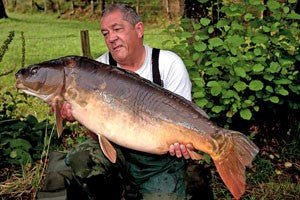
What's Really in Your Base Mix? Insights from Ken Townley
Share
For years now carp anglers have questioned the recipes and ingredients of the better base mixes on the market. Are they justified in doing so? Well yes, they are. If you bought a car you would want to be told the full specifications of the product as well as knowing how it performs. So it is with carp baits, and I am talking specifically base mixes now.
I have been with Nutrabaits since they were first established in 1985. I have not used any other base mixes than theirs, and that goes for their ingredients too. Nutrabaits are one of the very few bait firms that actually put on the bag a list of the ingredients that go to make up a particular base mix. True, they do not put the precise inclusion rates, and to be honest I don’t blame them
Finding a base mix that fulfils your entire requirements takes a fair bit of effort. The buzzword these days is ‘nutrition’ but that needs to be qualified. Even the simplest mix imaginable will be nutritious. It's how the carp DEAL with the nutritional components that matters, and you can aid the uptake (or other wise) of the nutrients in a bait by creating a blend of ingredients that will compliment each other to give an overall nutritional worth.
Since the dawn of the Nutritional Recognition era anglers have been aiming for the ultimate bait, but put quite simply, there isn’t one! What needs to be considered is what effect eating your bait will have on the carp. Many anglers still focus too much attention on the protein content of their base mix, and while some protein is advisable, it isn’t the be all and end all.
Some proteins are indigestible to a carp while others are more readily assimilated. However, protein is a small part of the overall picture and if you are looking to provide energy, then feeding protein on its own is not the answer. Proteins are complex nutrients that are primarily used to provide growth, to maintain health and to repair tissue damage. If you wish to create a bait with more energy then you need fats, and good fats at that. Fats are more easily digested so they have a sparing effect on the protein in the bait. In effect this means that the carp will use the fat for energy, leaving the protein for growth and to maintain condition. Too much protein in a bait will mean that most of it will end up being excreted, unused and wasted.
So where does this fat content come from? Largely we can provide adequate essential fatty acids through the use of certain 0-3 and 0-6 polyunsaturated oils, but we can also include fats as a larger proportion of the base mix itself. That is where birdfoods come into the picture. (I expect you were wondering when I’d get around to that!)
There are plenty of general advice articles on this site and they are all worth a read for up to the minute information.
Now, while a lot of Haith's® customers are private individuals who prefer to make their own baits, Haith's also have a considerable number of trade accounts with mainstream bait companies. Which brings me back in a rather roundabout fashion to the title of the article.
So do you REALLY know what is in the base mix that goes to form those many kilos of bait that you order every year? And even assuming that you do know, how can you tell that the ingredients are as fresh as possible. The simple answer is, you don’t and cannot know because at the moment most bait firms won’t tell you!
The point I want to make here is that Haith's sells a huge amount of product to the bait companies, but very rarely is it mentioned by name as part and parcel of the recipe. Indeed, in may cases companies go out of their way to disguise the true nature of the Haith's products they include by calling them something entirely different.
One of the most abused products in this respect is Robin Red®. Now we all know that the red stuff is one of the best carp attractors of all time, which is why so many bait firms claim it as an important part of one or more of their base mixes. However, many of those claims are totally spurious with red dyestuff or food colouring being the most commonly used substitute for Robin Red®
It’s quite simple...Haith's believe that if you think you are getting Robin Red® then that is what you SHOULD be getting…You’d be surprised, though, at how many well-known companies are claiming to put Robin Red® in their baits but are doing no such thing!
Therefore Haith's have come up with a novel idea to help you ensure you are getting the best and the freshest Robin Red® (and other Haiths’ ingredients) possible by compiling a list of approved bait companies that will be available for all to see on this site. The list will only include companies who purchase "regularly" from Haith’s. This means that anglers are more likely to get fresher and higher quality product in their baits. We’re not interested in supporting bait companies who purchased one bag of Robin Red® two years ago, and are still using it! That is simply bad value for the anglers. We want to direct anglers to the bait companies investing in high quality, fresh birdfood baits, because their fishing time’s too precious to waste fishing with over-age stock or poor quality copies! This list will make it easier for anglers to identify bait companies that purchase Haith's genuine bird foods and should thus increase their confidence in their bait AND OF COURSE, in the bait company that supplied them. So it works for both supplier and consumer!
I want to stress that the idea of this list is not simply to protect Haiths’ intellectual property. It is more to stop anglers from being ripped off or fooled into buying birdfoods that are not what they claim to be.
I'd like to quote some of the excuses we've heard from some bait companies challenged by Haith's over the last year, but I can't....yet!!
The"approved bait companies" list can be found by clicking here.
If you are one of those who are unaware of the company name and the trade named product Robin Red® let me just tell you that this amazing blend of who knows what (I certainly don’t) will enhance and boost any bait you care to name.
It can be used at as little as 20g/480g of mix, though it’s more usual inclusion rate is 50g/450g. Try adding it to a proprietary base mix (here I have used Trigga) to make your Trigga stand out that little bit more from the crowd. Or why not add it to your particles. It is highly effective, for instance if mixed in with prepared hempseed, which is then allowed to stand overnight.

I don’t normally bang my own drum in these articles but all the fish pictured here were caught on baits containing either Robin Red® or one or more Haiths ingredients.
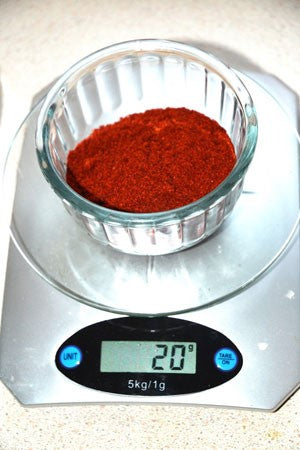
Even as little as 20g of Robin Red® can make a big difference to your bait.
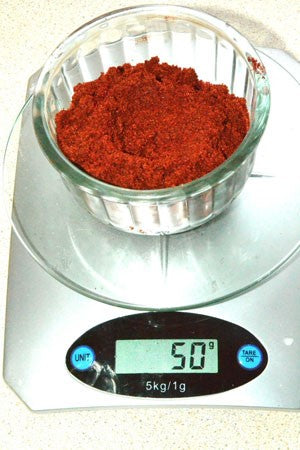
Though the suggested upper limit is 50g/450g of base mix.
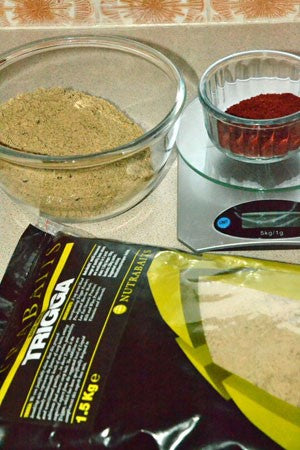
If everyone on the lake you are fishing is on Trigga, make yours stand out that little bit more with a touch of Robin Red®
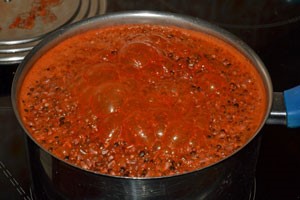
Or why not add it to your particles? A tablespoon per kilo of prepared bait is sufficient.
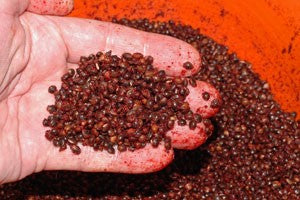
Here I have added Robin Red® to cooked hempseed and allowed it to stand overnight.
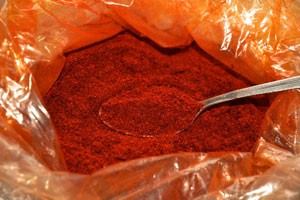
There is only one Robin Red® Make sure you are getting the genuine article.
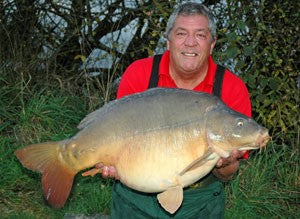
Trophy shot of fish caught on baits containing Haith's® ingredients
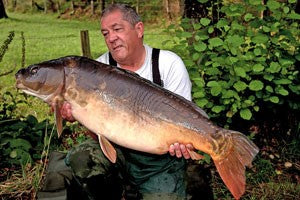
Another trophy shot of fish caught on baits containing Haith's® ingredients.
Haith's® and Robin Red® are registered trademarks of John E. Haith Ltd.
Written by Ken Townley
